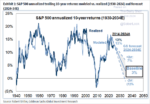| Poverty rates have fallen faster in the past 30 years than at any other time on record. The UN wants extreme poverty to disappear by 2030. We assess the data to see if this is achievable.
Click here to subscribe to The Economist on YouTube: http://econ.st/2AfBchr It is estimated that somebody escapes extreme poverty every 1.2 seconds. According to the World Bank, anyone on less than $1.90 per day is living in extreme poverty unable to afford basic food, clothing, healthcare and shelter. Absolute poverty rates have fallen faster in the past 30 years than in any other time on record. This is a remarkable achievement but the task of taking people put of the worst poverty remains a huge challenge. The impressive fall is the result of changes in just two countries, China and India. In the 1980s the majority of people in both of these countries were living in extreme poverty. But now the share of the poorest has fallen to 21% in India, and less than 2% in China. Increased productivity in farms and a mass migration from poor rural areas to the booming cities enabled many Chinese and Indian people to better their lives. Asia is moving into a new phase but can other parts of the world copy their model of moving people to factory jobs in cities? Today, more than half the world’s poorest people live in sub-Saharan Africa. The percentage of the African population living in extreme poverty fell from 54% in 1990, to 41% in 2013. But in that same time period, the population of sub-Saharan Africa boomed meaning the total number of poor people rose from 276m to almost 400m. The population of sub-Saharan Africa is predicted to reach 2bn by 2050 and a large percentage of those people are likely to be extremely poor. And unlike Asia, a transformation of this region is unlikely to happen soon. Sub-Saharan Africa is urbanising faster than any other place on earth. But moving into the cities is not providing the same ladder out of poverty as it did in Asia. A lack of infrastructure, public transport, and essential services in many African cities prevents poor people from finding jobs and getting an education. The rapidly growing population only makes mater worse by putting further strain on resources. Millions of poor people in sub-Saharan Africa live far below the World Bank’s threshold of $1.90 per day. That means it will be harder to pull them out of extreme poverty. Daily Watch: mind-stretching short films throughout the working week. For more from Economist Films visit: http://econ.st/2AdErpF |
Tags:




































